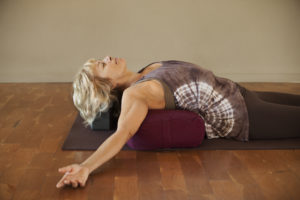 Interested in practicing yoga but not sure where to start? Believe me, you’re not alone. Many people are confused or overwhelmed by trying to sift through the many different kinds of yoga when trying to decied where to begin. Hopefully reading what follows will help.
Interested in practicing yoga but not sure where to start? Believe me, you’re not alone. Many people are confused or overwhelmed by trying to sift through the many different kinds of yoga when trying to decied where to begin. Hopefully reading what follows will help.
Start by defining your your goals
The right yoga class for you will hinge on what you are striving to accomplish. If your life is fast-paced and stressed, you might want to consider a yoga class that is the opposite.
A vigorous vinyasa practice (vinyasa means flow) will continue to stir up the part of your body’s nervous system that is geared for “fight or flight.” Add heat to a vigorous vinyasa class (as in “hot yoga”), and you can wind up leaving class feeling depleted instead of renewed and energized. A slower yoga style geared toward stimulating your “rest and digest” response, or parasympathetic nervous system, may be just the thing to help you be your best.
What follows are all examples of what is called Hatha Yoga. Hatha Yoga is an umbrella term used to describe the physical practice of yoga.
Yin Yoga is the slowest yoga style that I’ve experienced. In Yin Yoga, poses are held for up to 5 minutes, so that moderate stress may be applied to connective tissues like tendons, fascia, and ligaments. The aim is to increase circulation in the joints and improve flexibility. Here’s what Wikipedia says about Paul Grilley & Sarah Powers and Yin Yoga.
 Restorative Yoga is also very slow and tension-releasing. And yummy! We sleep to restore our energy, but we rarely take time to truly rest. During sleep, it can be natural to experience muscle tension. Restorative yoga poses help us learn to relax and rest deeply and completely without the muscle bunching that can happen during sleep. This type of yoga incorporates the use of blankets and props, such as bolsters, yoga straps, yoga blocks and eye pillows. Judith Hanson Lasater is credited with popularizing this form of yoga.
Restorative Yoga is also very slow and tension-releasing. And yummy! We sleep to restore our energy, but we rarely take time to truly rest. During sleep, it can be natural to experience muscle tension. Restorative yoga poses help us learn to relax and rest deeply and completely without the muscle bunching that can happen during sleep. This type of yoga incorporates the use of blankets and props, such as bolsters, yoga straps, yoga blocks and eye pillows. Judith Hanson Lasater is credited with popularizing this form of yoga.
Svaroopa Yoga is a form of yoga practice that includes a lot of rolling-around-on-the-floor targeted at opening the core and decompression of the spine – from sacrum to head. This therapeutic style of yoga reaches into and releases the deep-seated layers of spinal tension in the body. The use of blankets is emphasized in this practice.
 Kripalu yoga, the style in which I am trained, uses inner focus, meditation, standard yoga poses, breath work, the development of a quiet mind and relaxation to release the tensions of everyday life. Kripalu emphasizes following the flow of prana (or life-force energy), compassionate self-acceptance, observing the activity of the mind without judgment, and taking what is learned into daily life –or as yoginis like to say, carrying it “off the mat and into the world.”
Kripalu yoga, the style in which I am trained, uses inner focus, meditation, standard yoga poses, breath work, the development of a quiet mind and relaxation to release the tensions of everyday life. Kripalu emphasizes following the flow of prana (or life-force energy), compassionate self-acceptance, observing the activity of the mind without judgment, and taking what is learned into daily life –or as yoginis like to say, carrying it “off the mat and into the world.”
So, if you have a desire to start a yoga practice, further research of the styles I’ve mentioned would be a good place to start. Kripalu teachers learn to teach Kripalu yoga through experiential learning. There are no scripts in Kripalu yoga. It is by doing and practicing the system of Kripalu yoga that one develops the ability to teach it to others. I happen to be drawn to specializing in teaching gentle yoga to all skill levels; beginners, those returning to yoga or seasoned veterans. See Kripalu.org
Once you’ve got an idea about which style of yoga to pursue, you can start to look for a teacher. Many yoga center sites have a teacher directory. Additionally, many studios offer the option of attending your first class at no charge.
Keep in mind that the instructor may be as important as the style of yoga when finding the right fit. Don’t give up on a particular type of yoga because you didn’t enjoy an instructor’s style.
Experiment and enjoy the process of finding a good fit. The rewards are beyond description!
